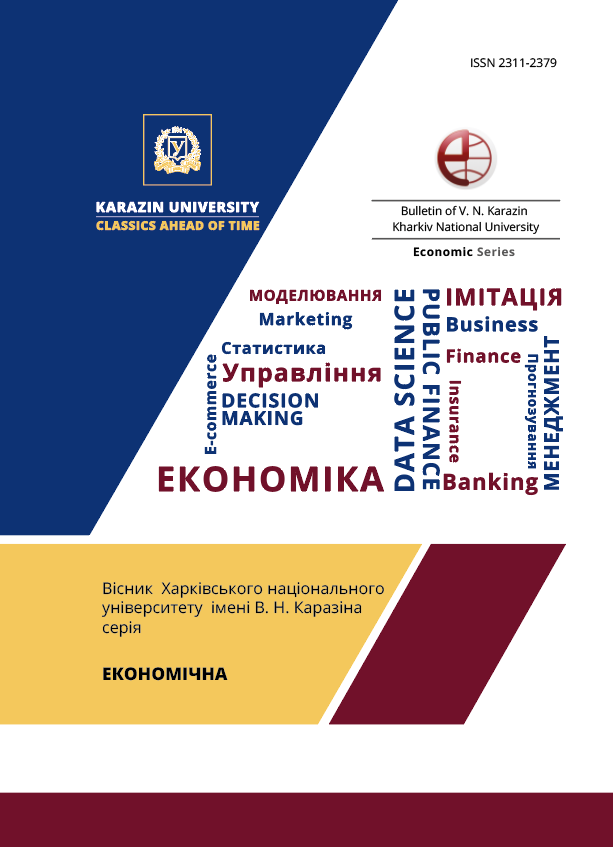Політика зайнятості під впливом COVID-19
Анотація
У статті аналізується макроекономічна ситуація на ринку праці та пропонуються заходи щодо відновлення зайнятості до рівня, який був до COVID-19. Вивчення основних понять, методів державного регулювання зайнятості свідчить про те, що на макроекономічному рівні країни використовуються різноманітні форми. Довгострокові обмежувальні заходи в країнах, що розвиваються, призводять до різкого падіння економічної активності, скорочення виробництва, зростання безробіття, зниження продуктивності праці через поширення COVID-19. Країни з високими макроекономічними показниками мають кращу соціальну згуртованість і надійні системи соціального захисту. Це має більш надійні наслідки на рівні зайнятості порівняно з країнами, що розвиваються. Оцінка різних економічних підходів щодо повного припинення заходів та локалізації поширення хвороби, введення обмежень на трудову діяльність, запровадження нових дистанційних форм праці та освіти пропонує країнам визначити спеціальну політику, яка залежить від національного економічного та фінансового потенціалу. Розвиток системи охорони здоров'я та вжиття заходів зі стабілізації епідемічної ситуації в країні є основою відновлення довіри та довіри в суспільстві. У статті розглянути виклики, з якими стикалася та продовжує стикатися українська економіка через наслідки пандемії COVID-19, погіршення макроекономічних показників, у тому числі зниження зайнятості. Застосування «адаптивних карантинних заходів» у регіонах демонструє адекватні наслідки для розвитку малого та середнього бізнесу. Результати дослідження відображають тенденції зростання безробіття, інфляції, зниження платоспроможності населення та ділової активності в окремих галузях економіки. Запропоновано численні форми підтримки та підвищення кваліфікації безробітного населення.
Завантаження
Посилання
Policy responses to COVID-19. (2020). International Monetary Fund. Retrieved from https://www.imf.org/en/Topics/imf-and-covid19/Policy-Responses-to-COVID-19#U.
Levchuk, K. (2021). IMF improves its forecast for Ukraine’s GDP in 2022 to 3.6 %. Retrieved from https://gmk.center/en/news/imf-improves-its-forecast-for-ukraine-s-gdp-in-2022-to-3-6.
Drahokoup, J. (2009). After Transition: Varieties of Political Economic Development in Eastern Europe and the Former Soviet Union. Comparative European Politics, 7(2), 279-298. doi: https://doi.org/10.1057/cep.2008.30.
Granovetter, M. (2005). The Impact of Social Structure on Economic Outcomes. Journal of Economic Perspectives, 19 (1), 33-50. doi: https://doi.org/10.1257/0895330053147958.
Baudry, B. & Chassagnon, V. (2018). The Analysis of Employment Relationship in Contract Economic Theories: a Critical Review Based on the Nature of American and French Labor Laws. Économie et institutions, 27. doi: https://doi.org/10.4000/ei.6127.
Jestl, S. & Stehrer, R. (2021). EU Employment Dynamics: The Pandemic Years and Beyond. WIIW Research Report, 457. Retrieved from https://wiiw..ac.at/eu-employment-dynamics-the -pandemic-years-and-beyond-p-5975.html.
Nosova, O. (2020). Perspectives System Transformation and Development Issues. Actual Problems of International Relations, 143, 69-85. Retrieved from http://apir.iir.edu.ua/index.php/apmv/index.
IMF – World Economic Outlook Database. (2021). Retrieved from https://www.imf.org/en/Data.
Trading Economics. State Statistics Service of Ukraine. (2021). Retrieved from https://tradingeconomics.com/ukraine/indicators.
European Business Association Survey (EBA Survey). (2020). Retrieved from https://eba.com.ua/en/research/doslidzhennya-ta-analityka/.
National Bank of Ukraine (NBU). (2020). Inflation Report. July. Retrieved from https://bank.gov.ua/admin_uploads/article/IR_2020-Q3_eng.pdf?v=4.
Pisarenko, T. V., Kuranda, T. K., Kvasha, T. K. and other. (2021). The state of scientific and innovative activity in Ukraine in 2020: a scientific-analytical note. Kyiv: UkrISTEI. (in Ukrainian)
Organisation for Economic Co-operation and Development (OECD). (2021). Retrieved from https://www.oecd.org/.
National Bank of Ukraine (NBU). (2021). Inflation Report. October. The Economy will grow in 2021 and fully recovery its losses from the Coronavirus crisis in 2020. Retrieved from http://bank.gov.ua/en/news/all/ekonomika-zrostatime-u-2021-rotsi-i-povnistyu-nadolujit-vtrati-vid-koronakrizi-u-2022-rotsi-inflyatsiyniy-zvit-nbu.
Economic and Financial Data for Ukraine. (2021). Retrieved from https//:www.ukrstat.gov.ua.
Nosova, O. (2021). The financial and psycho-social side effects of lockdowns in Ukraine.Money Matters. OneYearFollow-up Effectsof COVID-19 Lockdowns. ECDN, 18, 31-32. Retrieved from http://ecdn.eu/wp-content/uploads/2021/03/Money-Matters-Vol.-18-2021-1.pdf.

